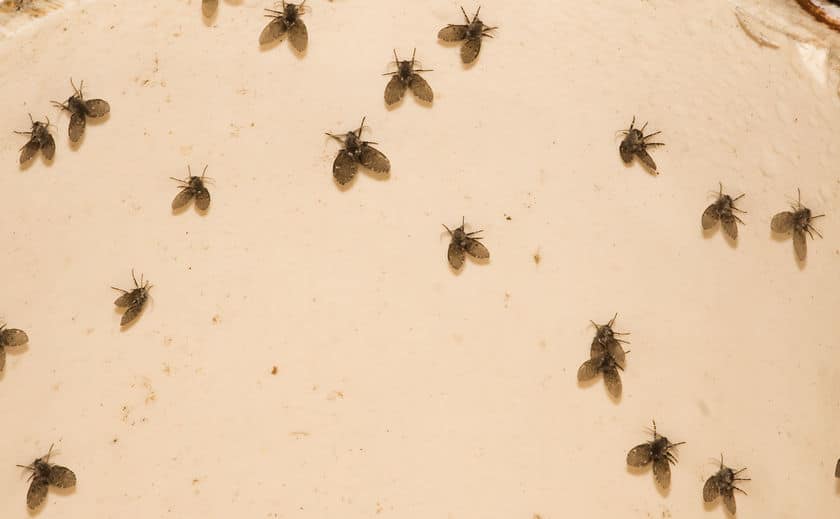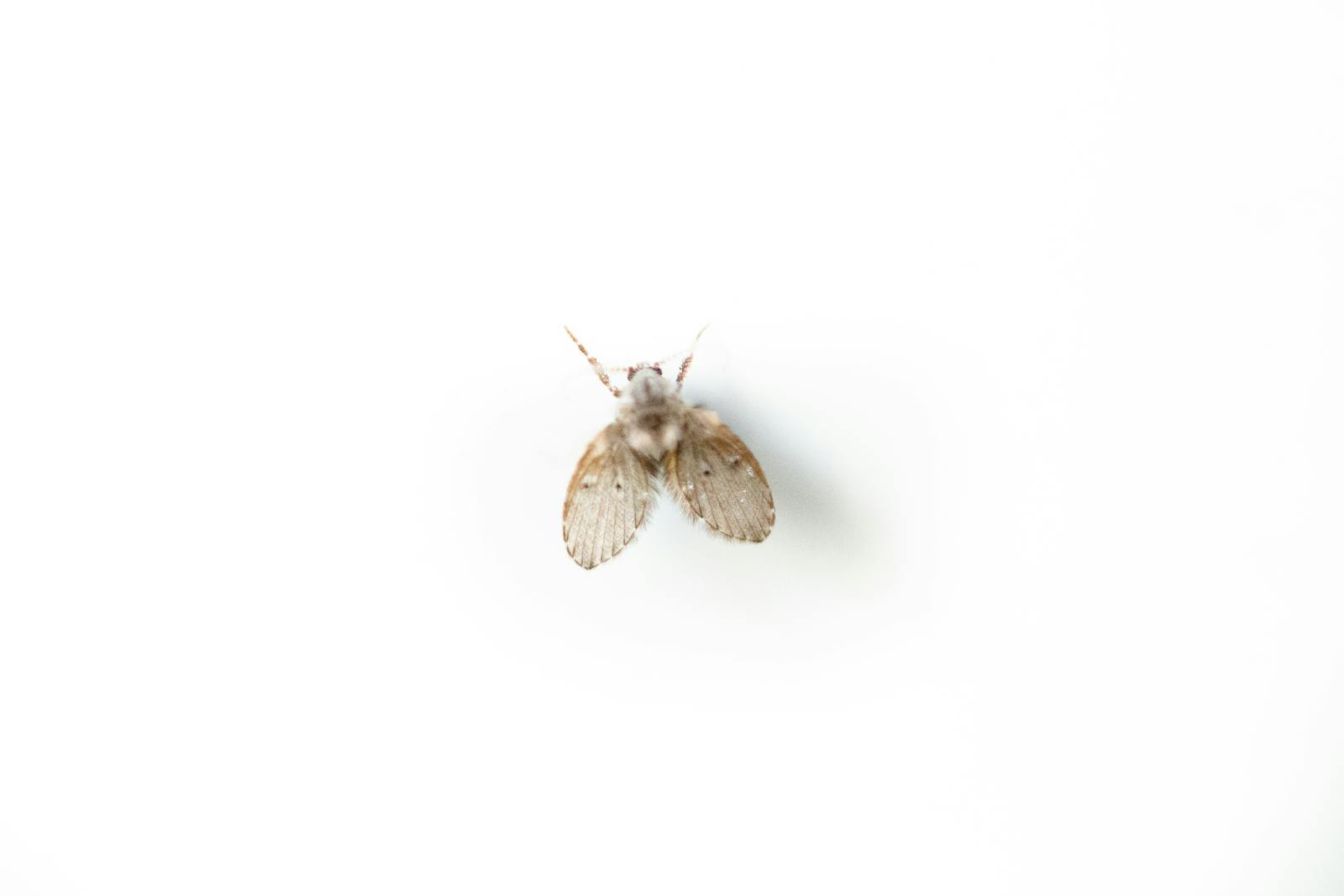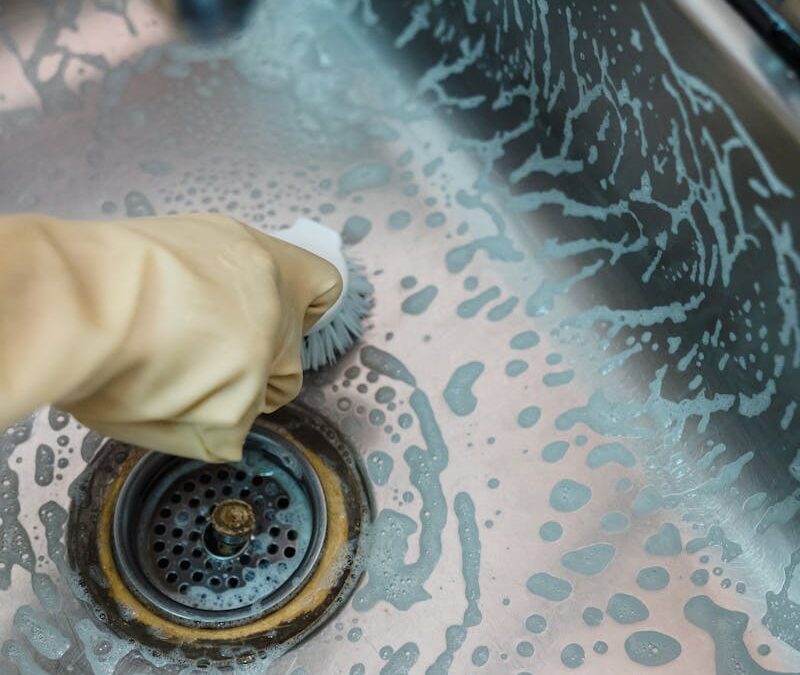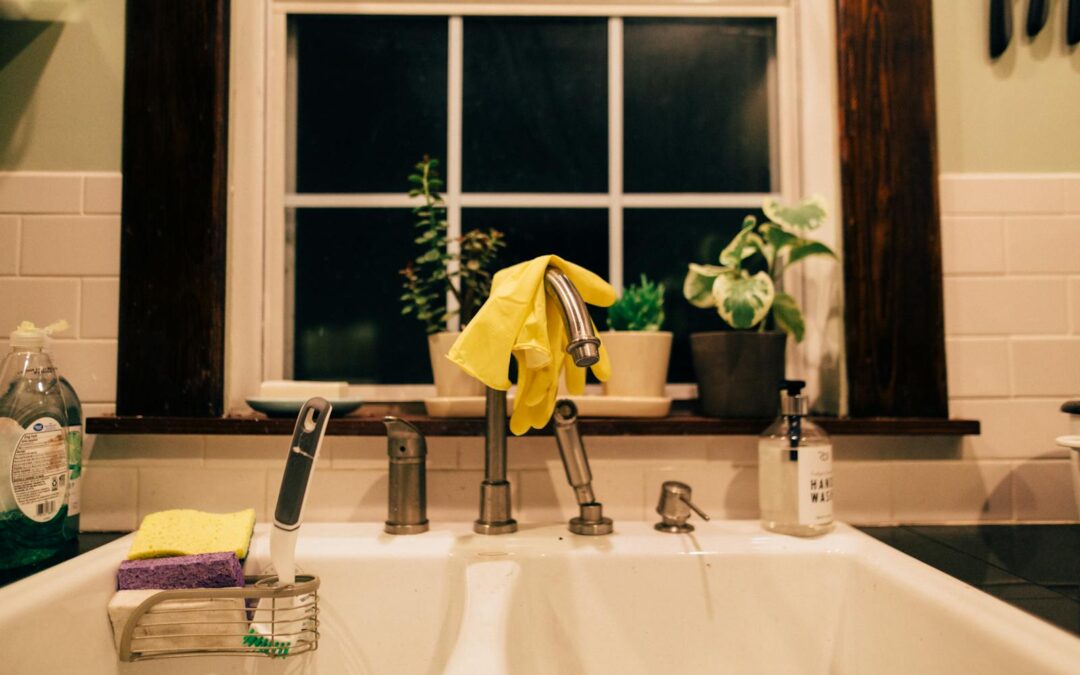Are drain flies harmful? If you’ve noticed small, fuzzy flies hovering near your sinks, drains, or showers, you might be dealing with drain flies. While these tiny insects, also known as moth flies or sewer flies, may look harmless, their presence can signal deeper issues in your plumbing system or sanitation practices. This guide will explore whether drain flies are harmful, what risks they pose, and how to prevent and get rid of them.

What Are Drain Flies and Their Life Cycle?
Drain flies are small, gnat-like insects with a fuzzy appearance due to their light gray, hairy bodies and wings. Despite being weak fliers, they can often be seen near drains, flying short distances around stagnant water or breeding grounds.
Schedule Service Online
Get a free estimate so you know what you're signing up for
"*" indicates required fields
For Emergency Services Call: 410-255-9300
Understanding Their Life Cycle
- Eggs Hatch: Female drain flies lay drain fly eggs in irregular masses on nutrient-laden organic material, such as the buildup in drains, clogged drains, sewage, or moist compost. Eggs hatch within 32-48 hours.
- Larvae Feed: The drain fly larvae feed on decaying organic matter, including algae, bacteria, and fungi found in the film or slime accumulation within drains, pipes, or traps, as well as in compost piles and other damp areas.
- Pupae and Adults: After developing as larvae, they pupate before maturing into adult flies. The entire life cycle—from egg to adult drain fly—can take just one to three weeks.
- Lifespan: Adult drain flies live for about 20 days, during which they lay more eggs, perpetuating the cycle.
Drain Fly Habitat and Behavior
Common Breeding Sites
Drain flies thrive in areas with moisture, food sources, and decaying organic material. They are often found in:
- Sinks, bathroom drains, and floor drains.
- Septic tanks and sewers.
- Compost piles or areas with nutrient-rich organic material.
- How They Behave
Filter flies, also known as drain flies, are attracted to areas with standing water, mold, and organic matter. They are most active at night but can often cling to walls near breeding sites during the day.

Health Risks and Hazards of Drain Flies
While drain flies don’t bite humans or feast on blood like mosquitoes, they are not entirely harmless. Here’s why:
- Health Hazard: Drain flies carry bacteria from drains and septic tanks, potentially contaminating surfaces like kitchen counters or food preparation areas.
- Trigger Allergic Reactions: Large infestations may exacerbate asthma symptoms or trigger allergic reactions, particularly in homes with sensitive individuals.
- Parasitic Infection: Although rare, drain fly larvae have been known to cause opportunistic myiasis (a parasitic infection) when they come into contact with open wounds or damp skin.
Identifying a Drain Fly Infestation
Not sure if you have a drain fly problem? Here’s how to identify an infestation:
- Visual Identification: Look for small insects with fuzzy wings hovering around suspicious areas.
- Breeding Sites: Cover sinks or drains with a cup containing a few drops of vegetable oil to trap any emerging adult flies. If you catch some, you have identified a breeding source.
- Signs of Infestation: Check for clumps of eggs, larvae feeding on organic material, or organic buildup in floor drains and plumbing. Drain flies reproduce by laying eggs in these damp environments, so spotting eggs or larvae is a clear sign of infestation.
How to Get Rid of Drain Flies
Eliminating drain flies involves targeting their breeding sites and removing food sources. Here are a few methods to tackle an infestation:
Clean and Disinfect Drains
- Regularly clean sinks, floor drains, and pipes to remove decaying organic material.
- Use drain cleaners, a mix of baking soda and vinegar, or boiling water to kill larvae and eggs.
Address the Root Cause
- Inspect plumbing systems to locate any clogged or damaged pipes.
- Replace broken pipes or repair leaks to eliminate standing water or moist environments.
Prevent Future Breeding
- Invest in drain covers or screens to block flies from entering drains.
- Remove standing water or rotting organic matter from compost piles and other areas in and around your home.
Prevention Tips to Avoid Drain Fly Infestations
A clean and dry environment is key to preventing drain fly infestations in your home or business. Follow these prevention tips:
- Clean sinks, toilets, and shower drains regularly.
- Remove rotting fruits and vegetables immediately.
- Fix leaks in your plumbing system to prevent excess moisture buildup.
- Inspect and maintain septic tanks and storm drains to reduce breeding sites.
The Risks of a Drain Fly Infestation
If left untreated, drain fly infestations can spiral out of control due to their high reproductive rates. Here’s why acting quickly is essential:
- Cost and Embarrassment: For businesses, an infestation can be both costly to resolve and harmful to your reputation.
- Hidden Problems: Drain flies often signal larger issues like clogged pipes or excessive organic material in your plumbing system.
DIY vs. Professional Drain Fly Control
Should you tackle a drain fly problem on your own or call in the professionals? Here’s a breakdown:
DIY Solutions
- Home remedies like vinegar traps, boiling water, or store-bought drain cleaners can help address small infestations.
- Regular cleaning and maintenance often prevent new problems.
When to Call a Professional
- For severe or recurring infestations, professional pest control services can provide comprehensive solutions.
- Local pest control experts can identify the source of the problem and design a unique treatment plan.
Other Things to Consider
When dealing with drain flies and similar pests, there are a few additional factors to keep in mind to ensure your home remains pest-free and your plumbing functions efficiently.
Bugs and Plumbing
Drain flies, also known as true flies, sewer gnats, or sink flies, are not the only flying insects that may emerge around your home’s plumbing. Fruit flies and other pests attracted to food or flower nectar can sometimes be mistaken for drain flies. However, they have distinct habits and may require different approaches to eliminate them.
Sitting water is one of the most common culprits behind infestations. Stagnant water in drains or pipes provides an ideal breeding ground for these insects. Regularly running hot water through your drains can help clear out organic buildup and flush away eggs or larvae. However, it’s important to address deeper plumbing issues, such as leaks or blockages, to prevent re-infestation.
Another factor to consider is the flying ability of these pests. While drain flies do not fly long distances, their ability to reproduce quickly can cause noticeable outbreaks if left unchecked. To manage the problem effectively, combining proper sanitation with thorough plumbing maintenance is key.
Moreover, drain flies can also be a sign of larger plumbing issues, such as damaged or malfunctioning septic systems. In these cases, it’s important to seek professional help to address the root cause and prevent further infestations.
In addition to regular cleaning and maintenance, there are also natural remedies that can help control drain fly populations. One example is using essential oils like eucalyptus or peppermint as a deterrent. These scents are unpleasant for drain flies and can discourage them from laying eggs in your drains.
Another natural solution is using bacterial cleaners that break down organic matter in your drains, making them less attractive for drain flies to lay their eggs. These cleaners are eco-friendly and can also help prevent clogs in your pipes.
Prevention is Key
While these natural remedies can be effective, prevention is key when it comes to controlling drain flies. Here are some tips to keep them at bay:
- Regularly clean and maintain your drains to remove any build-up of organic matter.
- Use a drain catcher or strainer to prevent food scraps, hair, and other debris from going down the drain.
- Fix any leaks or standing water issues as this creates an ideal breeding ground for drain flies.
- Keep your bathroom and kitchen areas dry and well-ventilated.
- Dispose of garbage regularly and store it in a sealed container.
- Avoid using chemical cleaners that can kill off beneficial bacteria in your drains.
- Consider using natural remedies like vinegar and baking soda to clean and deodorize your drains.
In addition to these preventative measures, it’s also important to address any existing drain fly infestations. Here are some steps you can take:
- Identify the source of the infestation: Drain flies lay their eggs in organic matter that is trapped in your drains, so it’s important to determine which drains are affected.
- Clean and disinfect affected drains: Using a mixture of hot water, bleach, and detergent can help eliminate drain fly larvae and eggs.
- Use a biological drain treatment: These products contain enzymes that break down organic matter and prevent future infestations.
- Keep drains clean and clear: Regularly flushing your drains with hot water can help prevent build-up of organic matter that attracts drain flies.
- Fix any leaks or plumbing issues: Drain flies are attracted to moisture, so fixing any leaks or plumbing issues can help prevent future infestations.
Additionally, here are some tips for preventing future drain fly infestations:
- Properly dispose of food waste: Make sure to properly dispose of food waste in the trash, rather than allowing it to go down the drain.
- Clean up spills and crumbs promptly: Any spills or crumbs left on surfaces can attract drain flies, so make sure to clean them up promptly.
- Regularly clean drains: Use drain cleaners or a mixture of vinegar and baking soda to regularly clean and maintain your drains, which can help prevent buildup that attracts drain flies.
- Check for clogs: Be sure to check your pipes and drains for any clogs or blockages that could potentially attract drain flies. If you do find a clog, make sure to remove it as soon as possible.
- Keep areas dry: As mentioned before, drain flies are attracted to moisture. By keeping areas like sinks, showers, and other wet surfaces dry, you are less likely to attract these pests.
By following these tips and staying vigilant about potential plumbing issues, you can greatly reduce the likelihood of experiencing a drain
Helpful Resources and Links
Here are six valuable resources to help further your understanding of drain flies and plumbing issues, as well as how to keep your home pest-free and your plumbing in top condition:
EPA Guide on Household Pest Management
This comprehensive guide from the Environmental Protection Agency offers tips and strategies for managing household pests like drain flies safely and effectively.
https://www.epa.gov/safepestcontrol
Plumbing Basics from the American Society of Plumbing Engineers
https://www.aspe.org/plumbing-basics/
Learn the fundamentals of plumbing systems to better understand how to maintain and troubleshoot issues in your home.
CDC Resources on Mold Prevention
https://www.cdc.gov/mold/default.htm
Since drain flies thrive in environments with organic buildup, this resource offers valuable information on preventing such conditions in your home.
Drain Cleaning Tips by Family Handyman
https://www.familyhandyman.com/project/how-to-clean-out-a-drain/
Discover practical DIY tips on keeping your drains clean and free of debris to discourage drain fly infestations.
National Pest Management Association Pest Encyclopedia
https://www.pestworld.org/pest-guide/
This encyclopedia provides in-depth profiles on various pests, including drain flies, and offers guidance on control measures.
https://www.mdsewerandplumbing.com
Our website features detailed information on professional services, prevention tips, and support to address your plumbing and pest concerns with ease.
By leveraging these resources, you can stay informed and take a proactive approach to managing both plumbing and potential pest issues.

Say Goodbye to Drain Flies Today
Drain flies are more than just an eyesore; they can pose risks to your health and your home’s hygiene. By understanding their behavior, removing breeding grounds, and staying proactive with prevention, you can keep your home free of these tiny invaders.
If you’re dealing with a stubborn infestation or suspect a deeper plumbing issue, help is just a call away. Contact Maryland Sewer and Plumbing today for expert drain and plumbing services. From routine cleanings to 24/7 emergency repairs, our team can help you safeguard your home against issues like drain flies and more.




